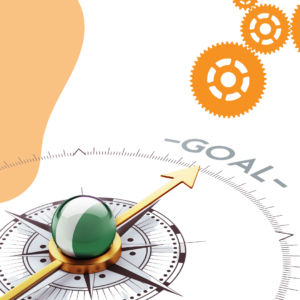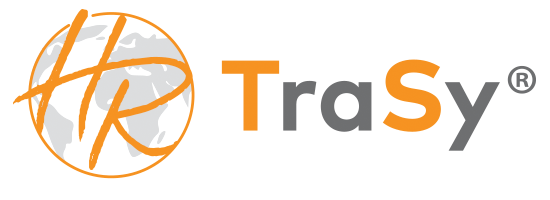HR goals and best practices
The ability to draw on internal company HR best practices is often an absolute goldmine! What could be better for a company than to fall back on concepts and approaches that are already anchored in the company and have proven themselves in practice?
Author: Christina Haury

Before looking at HR best practices, we must remember that only carefully defined goals lead to efficient and practical improvements.
The task is to align these goals with the survey results
It should indicate which goals are priorities. Also, remember that some objectives and work steps build on others. Therefore, they need to be tracked in time.
For example: updating all contracts and policies annually makes little sense if only a fraction of the required documents even exist. Actual state (survey results) Target state (goals set in the last step) Best practice links and lessons learned In this step, the more detailed and specific, the more promising the strategy. When writing down incoherent structures, missing work steps become visible and can be corrected.
Based on this information, a roadmap must now be developed. The name is to be taken very literally here: It describes the path from the starting point to the goal.
Track your progress
We’re all familiar with New Year’s resolutions. They are formulated with a lot of motivation, but little is done at the end of the year. This is not because the goals were too difficult to achieve. It’s because when plans get out of sight, they get forgotten and disregarded.
To avoid this, visibility is just the ticket. Visual aids of all kinds are helpful; For some employees, one may be more effective than the other. Both; clear visualization of goals on the spot as well as work steps individually in the workplace can work wonders.
There are many ways to structure such transformation processes and monitor processes.
A well-known and proven system is the so-called OKR Goals and Key Results. This involves setting different levels of goals and milestones. For example, a key goal consists of four key results that lead in parallel or succession to the achievement of this goal. Each of these milestones then becomes a work step.
Another pillar, as already mentioned, is coherence
If such a structured roadmap or statement of work is not regularly reviewed and completed, it is useless. Not everything needs to be worked out perfectly in the first version, because circumstances and tasks change or crystallize over time. To avoid duplication of effort, it is recommended that leaders update the progress of each activity in this detailed roadmap.
Regular monitoring is then used to record the progress of goals and milestones. Of course, at the end of the defined time, it is necessary to evaluate whether the measures have taken effect. Ideally, HR transformation should be understood as an ongoing process. This means that after the measures have been implemented, they are evaluated again and further procedures are optimized. We have already explained how a survey can be optimally carried out.
When setting goals for the implementation phase, the following is important:
- Precise and clearly stated
- Specified in terms of time
- Prioritized in their entirety
- Reasonably sequenced
We now have two important sets of data in front of us:
1. Where do we want to go (= derived from the strategy)?
2. Where are we – globally, regionally and locally (= outcome)?
At this point, it is helpful to refer back to the HR strategy. The HR strategy makes it clear in which direction the company wants to go and which HR topics will be relevant for the company in the future. In this way, a prioritization of the action steps to be implemented can be derived from the HR strategy.
Best practices as a gold mine
Under this point it becomes clear why not only deficits are relevant results. On a regional and global level, sites with similar or different HR management can be compared and networked.
However, the individual HR sites often do not learn about the good examples because a structured collection and evaluation of best practices is not systematized. As a result, many synergies remain unused. Concepts are duplicated, for example because an HR site does not even know that a concept already exists, but has disappeared into a desk drawer. Valuable time, money and manpower are wasted and internal competencies remain undiscovered.
What are Best Practices?
They refer to approaches that have proven themselves in a similar environment and thus serve as a role model or path to success.
The ability to draw on internal company best practices is often an absolute goldmine! What better way for a company to do this than to draw on concepts and approaches that are already embedded within the company and have proven themselves in practice?
However, the individual HR locations often do not learn about the good examples because a structured collection and evaluation of best practices is not systematized. As a result, many synergies remain unused. Concepts are duplicated, for example because an HR site does not even know that a concept already exists but has disappeared into a desk drawer. Valuable time, money and manpower are wasted and internal competencies remain undiscovered.
Haury Solutions GmbH
January, 2023


